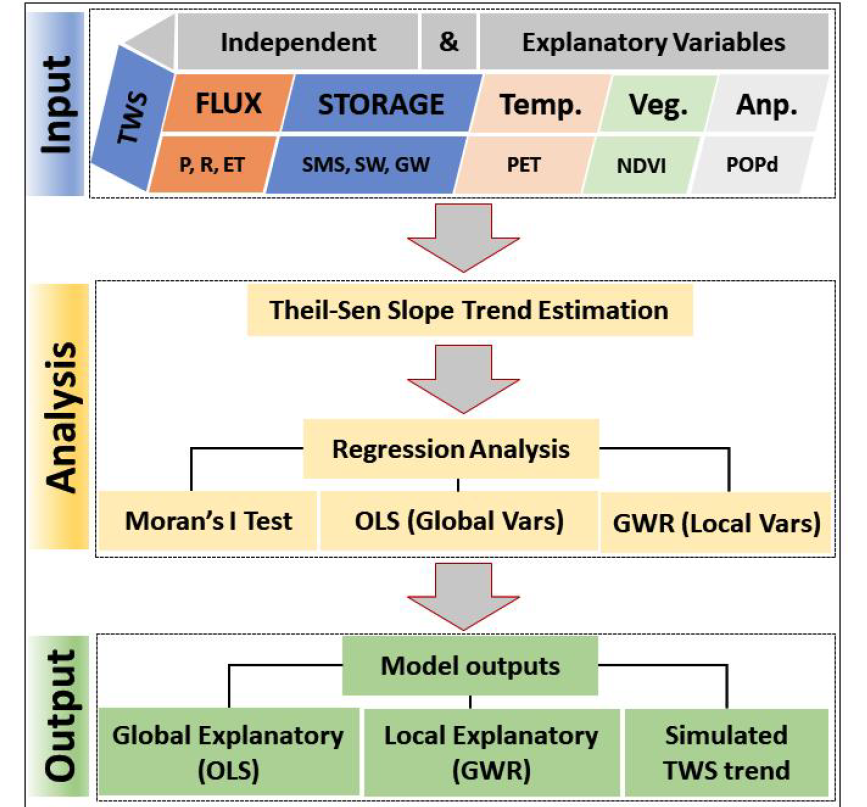GRACE-derived Terrestrial Water Storage Anomalies (TWSA) continue to be used in an expanding array of studies to analyze numerous processes and phenomena related to terrestrial water storage dynamics, including groundwater depletions, lake storage variations, snow, and glacial mass changes, as well as floods, droughts, among others. So far, however, few studies have investigated how the factors that affect total water storage (e.g., precipitation, runoff, soil moisture, evapotranspiration) interact and combine over space and time to produce the mass variations that GRACE detects. This paper is an attempt to fill that gap and stimulate needed research in this area. Using the Nile River Basin as case study, it explicitly analyzes nine hydroclimatic and anthropogenic processes, as well as their relationship to TWS in different climatic zones in the Nile River Basin. The analytic method employed the trends in both the dependent and independent variables applying two geographically multiple regression (GMR) approaches: (i) an unweighted or ordinary least square regression (OLS) model in which the contributions of all variables to TWS variability are deemed equal at all locations; and (ii) a geographically weighted regression (GWR) which assigns a weight to each variable at different locations based on the occurrence of trend clusters, determined by Moran’s cluster index. In both cases, model efficacy was investigated using standard goodness of fit diagnostics. The OLS showed that trends in five variables (i.e., precipitation, runoff, surface water soil moisture, and population density) significantly (p<0.0001) explain the trends in TWSA for the basin at large. However, the models R2 value is only 0.14. In contrast, the GWR produced R2 values ranging between 0.40 and 0.89, with an average of 0.86 and normally distributed standard residuals. The models retained in the GWR differ by climatic zone. The results showed that all nine variables contribute significantly to the trend in TWS in the Tropical region; population density is an important contributor to TWSA variability in all zones; ET and Population density are the only significant variables in the semiarid zone. This type of information is critical for developing robust statistical models for reconstructing time series of proxy GRACE anomalies that predate the launch of the GRACE mission and for gap-filling between GRACE and GRACE-FO.

